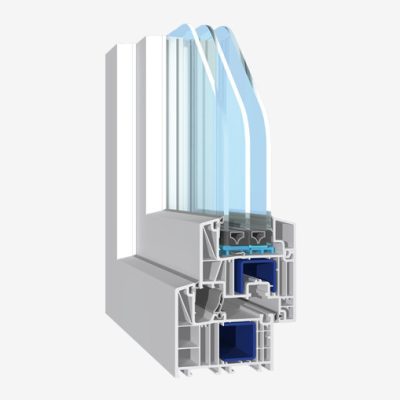Curtain walls are an architectural solution that is particularly suitable for modern buildings. They are a type of additional building facade, but they do not have a load-bearing function and the weight of the building is not transferred to them. A curtain wall is only affected by its own weight and the force of the wind. It fulfils a thermal and acoustic insulation function as well as a decorative one.
Curtain walls are a modern system of lightweight structures with an aluminium profile frame, often filled with large panes of glass or plastic. The glass can be transparent or coloured. Designers and manufacturers are competing to create walls with as few visible fittings and joints as possible. There are several ways of installing curtain walls, which are distinguished by the type of frame and the degree of visibility of the mounting elements. The ideal solution is a wall with a smooth and uniform texture. Furthermore, curtain walls must meet specific requirements in terms of weather resistance. Curtain walls must be airtight and at the same time allow water vapour and air to escape. In addition, they must be extremely durable and resistant to mechanical damage. In the case of very tall buildings, resistance to dirt and self-cleaning properties are also important criteria.
Glass curtain walls can replace existing walls made of traditional solid construction materials. This allows you to turn ordinary rooms into spectacular spaces. Walls made of glass set in aluminium frames create the impression of blurring the boundaries between the exterior and interior zones, allowing much more natural light to penetrate into living spaces and, on the other hand, opening them up to panoramic views. Aluminium curtain wall systems come in a wide range of aesthetic and functional designs, from vertical and horizontal masking strips to more minimalist designs such as structural or semi-structural glazing. For companies that produce these curtain wall systems, it is no problem to create solutions tailored to individual requirements when the architectural design specifies very specific, non-standard technical parameters and exceptional aesthetic solutions.
Read also: The advantages of curtain walls are undoubtedly sound and heat insulation and the provision of significantly more natural light to rooms inside the building. Protection against the effects of weather is particularly important in the case of tall buildings. Curtain walls, as the name suggests, also have the task of protecting the outer walls of the building, significantly extending their lifespan. In addition, they provide an extremely stylish finish to the building, giving it prestige and emphasising its avant-garde character. By using coloured glass, it is also possible to create original façade designs. This solution allows designers to develop their creativity to an unprecedented degree. On the other hand, any disadvantages of curtain walls are rather due to their improper installation or poor quality of the materials used, and not to the technology used or design defects. Insufficient precision of installation can lead to leaks, which later cause moisture between the curtain wall and the building facade. In turn, moisture that is not sufficiently effectively drained causes greater heat loss in the building. Poor-quality materials also carry the risk of corrosion of the frame components and mechanical damage caused by atmospheric factors. Read also:What are curtain walls?
Advantages of curtain walls
Disadvantages
When is it worth investing in curtain walls?
Polecane produkty

Salamander Bluevolution 73

Salamander Bluevolution 82

